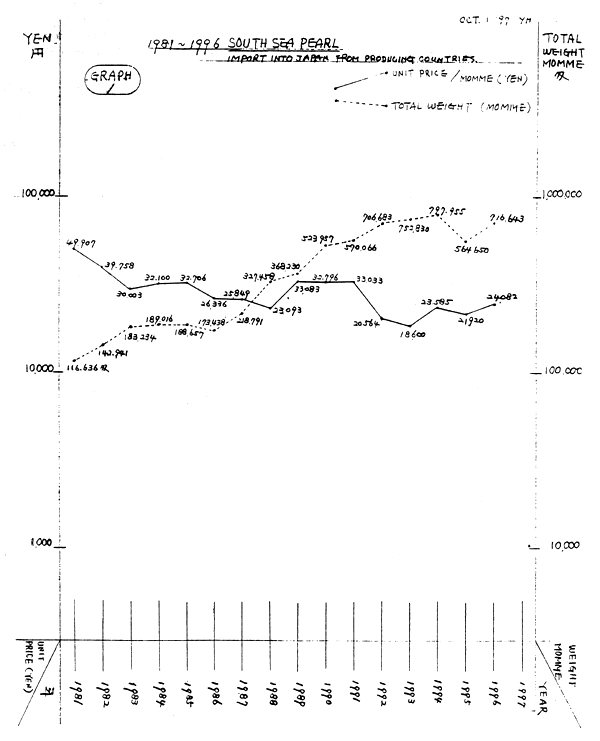In the development of future pearl cultivating, the silver pearls would be the best choice. They already have a stable international market, and demand is still growing (Figure 4). Sellers would profit if the total production increased three times. Of the silver pearls family, the Australian silver pearls would be preferable, because their products can secure 1.5 to 2 times more than the other silver pearls produced in Indonesia and so on of which pearl oysters are of gold-lipped.
As for hatchery breeding of gold-lipped pearl oysters, Myanmar's broodstock is preferable as the growth of the oyster is fast and they produce pearls of a deep orange-red hue that is highly valued. Unfortunately, the breeding of this species seems to be more difficult.
The demand for the smaller 9mm to 12mm sizes will definitely grow stronger, even though they have a lower unit price. As hatchery-bred oysters are a little smaller, pearls of this size may be more readily available.
Should producers of the black-lipped cultured pearls continue to follow their present production policy, there is a chance that they will reach a saturation point in the market.
| Index | ||
| Total production of silver pearls | 680 Kan | 100 |
| Total production of black pearls | 1,500 Kan | 220 |
The total production of black pearls is already 2.2 times the silver pearls, and two-thirds of market share is Japan. If the black pearl producers wish to expand their market more widely, the production of gray pearls may be the answer. However the gray colour comes from the inner part of the shell which is not as lustrous. The lack of luster in most cases is the reason why they are not strongly recommended. In future, if this problem can be solved by breeding improvements, it may cause a great revolution in the black pearl market.
In the past, the Akoya oyster produced the most pearls. Consequently, their lower comparative price was within the range of more customers, and was, therefore, attractive. Sadly, Akoya oysters were already struggling with a high mortality problem, but the fatal blow was the poisonous Formalin and the imported Chinese virus. Within three to four years, the total production dropped to about one-third or at the worst, one-quarter what it was at its peak. At the moment there is no way to stop this tragedy.
The Japanese pearl producers are now looking for new fishery grounds in China and Vietnam. It may be beneficial for Fiji to consider this and start experimentation with the Akoya oyster found in their area.

Figure 4. 1981 – 1997 South Sea Pearls (Silver pearls) Import into Japan from Producing Countries.